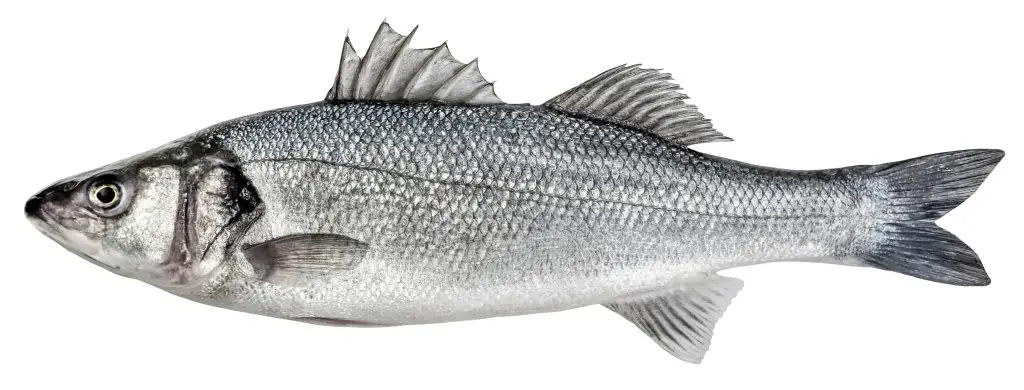The main difference between groupers and sea bass lies in their appearance and habitat. Groupers belong to the subfamily Epinephelinae under the family Serranidae. Serranids are often called sea basses, so grouper can be called a type of sea bass, as well. However, this subfamily of fishes has many distinguishable features compared to the rest of the family.
Sea bass is a common name given to several fishes of various species of different families, but mostly, they refer to a group of fishes under the family Serranidae of the order Perciformes, which also belongs to the family and order groupers. Sea basses under Serranidae are all quite small in size.
Most of the species of sea bass are marine. They are usually found in the shallower regions of warm and tropical waters. The family includes around 475 species in total. Although the term sea bass may be used for the family, sea bass is more of an umbrella term that also may refer to fishes like jewfish, hind, graysby, and more than sea basses.
The term “grouper” is mainly used to refer to fish from the two big genera, Epinephelus and Mycteropercam, but some other minor genera are also called groupers.

Difference between groupers and sea bass based on appearance
Though they are in the same family, it is quite easy to differentiate between sea bass and a grouper based on the first look. The biggest giveaway is obviously their size. Groupers are the only subfamily under Serranidae that grow up to huge sizes, and sea basses are much smaller in size.
Sea bass has a rather perchlike structure. Their body is more or less elongated and has small scales. Their mouth is fairly large, while their tail is generally straight-edged or rounded. The dorsal fin of sea bass is what helps you identify them. It consists of a spiny section in the front and a soft-rayed section at the hind. The two portions of the fin are usually joined. Although in some cases, they may be separated by a notch.
The body color of sea basses varies greatly from not only species to species but also within the same species. Some sea basses can change to different color patterns. In some species, the young may be patterned differently from the adults. It’s worth noting that the seabass that live in the deeper waters usually show a considerably redder coloration than those of the same species living near the shore.
Habitat differences between groupers and sea basses
Sea basses, excluding groupers, have a widespread habitat and are present in various places. Depending on the species, the habitat and habitat preferences vary.
For example, there are six species of sea basses under the subfamily Moronidae of the family Serranidae. These sea basses have two separate dorsal fins joined at the base and are exclusively found in the northern regions. These mainly include the temperate waters of North America and Europe. Some of these marine species may even be found in rivers when they have to spawn.
The most well-known species of sea bass is also a Moronidae member, and you will recognize it as the European bass, scientifically known as Dicentrarchus labrax. These fish are distributed throughout the river mouth stretching from Scandinavia to the Mediterranean. To give more examples, the white bass or M. chrysops is found in the eastern United States, while the sea bass named the white perch lives in the Atlantic waters of North America.
The habitat of groupers isn’t so all over the place, and they only live in some specific spots. The grouper population can be primarily divided into two stocks. One is in the Florida Keys, including the Gulf of Mexico. The other is in the Atlantic waters, but groupers are also found all along the Brazilian coast, the Caribbean, and the Bahamas.
Groupers prefer shallow and tropical places, just like sea bass. A curious fact about groupers is that they have a preference for concrete underwater structures. You will see them often swimming around ledges and shipwrecks at the bottom. You will also see them on hard bottoms like rocks and both artificial and natural reefs.
The taste difference between grouper and sea bass
There isn’t a lot of difference between the taste of a grouper’s flesh and sea bass. Some small difference does exist, but they might not be distinguishable to someone who doesn’t have a sensitive sense of taste.
Sea bass has a moist, white flesh containing a mild and delicate flavor. Subtle sweetness is also present in it, making it quite a delicious fish to eat. Medium-sized flakes that are quite firm, like some haddock’s, are another feature of this fish. The same terms are used to describe the taste of a grouper’s flesh. Neither fish contain any fishy taste.
However, there are two important points to note if we’re talking about eating sea bass and groupers. Sea bass is more widely available than groupers and way more affordable. On the other hand, several species of groupers are endangered and fishing for them is prohibited, and you might not find it everywhere.
Another point is that while there is plenty of nutritional value to grouper’s meat, it also contains high levels of mercury. Eating multiple servings of this meat can lead to ciguatera or mercury poisoning. Sea bass should be thought about if you are going to be eating fish on a consistent basis for the high omega-3 content.
Conclusion
Grouper and sea bass are both fish that can be found in the waters of Florida. The two fish have many similarities, but they also have some differences. Grouper is not as common to catch as sea bass, and it has a deeper flavor than sea bass. Sea bass and groupers are also very different in appearance and availability.












Pingback: What Is a Broomtail Grouper? | Reel Fishing Guru
Pingback: What is the Difference Between Grouper and Escolar? | Reel Fishing Guru